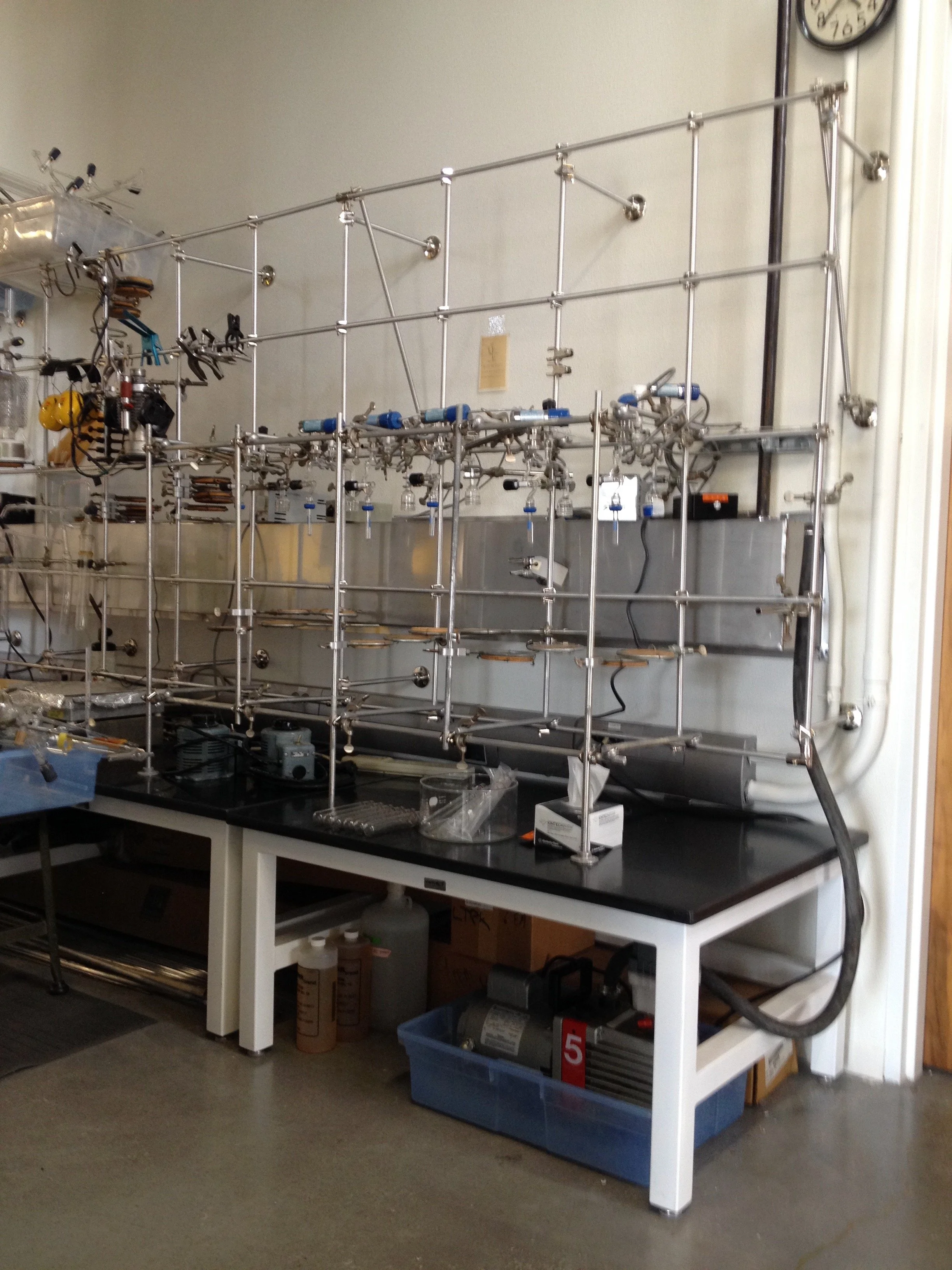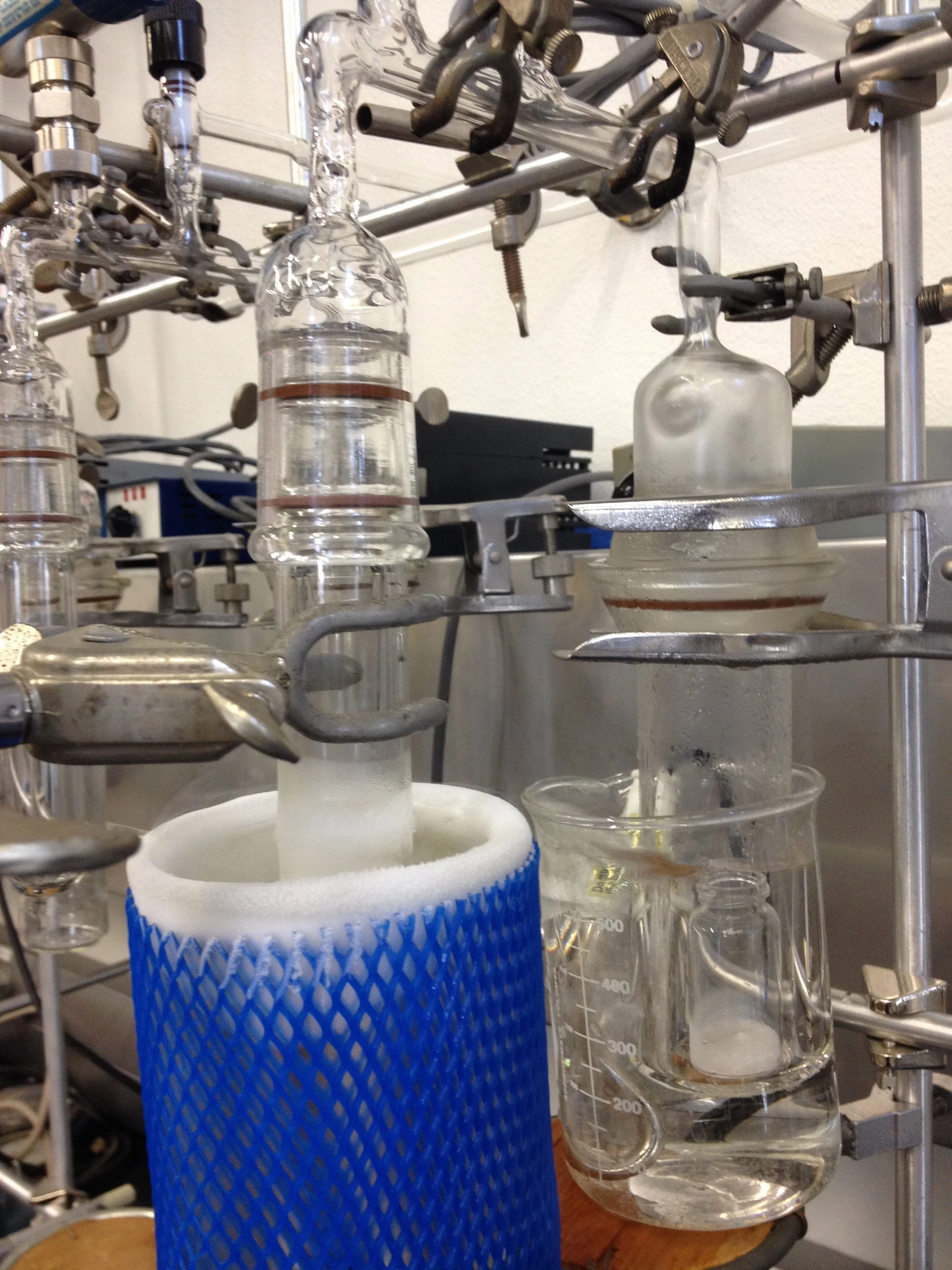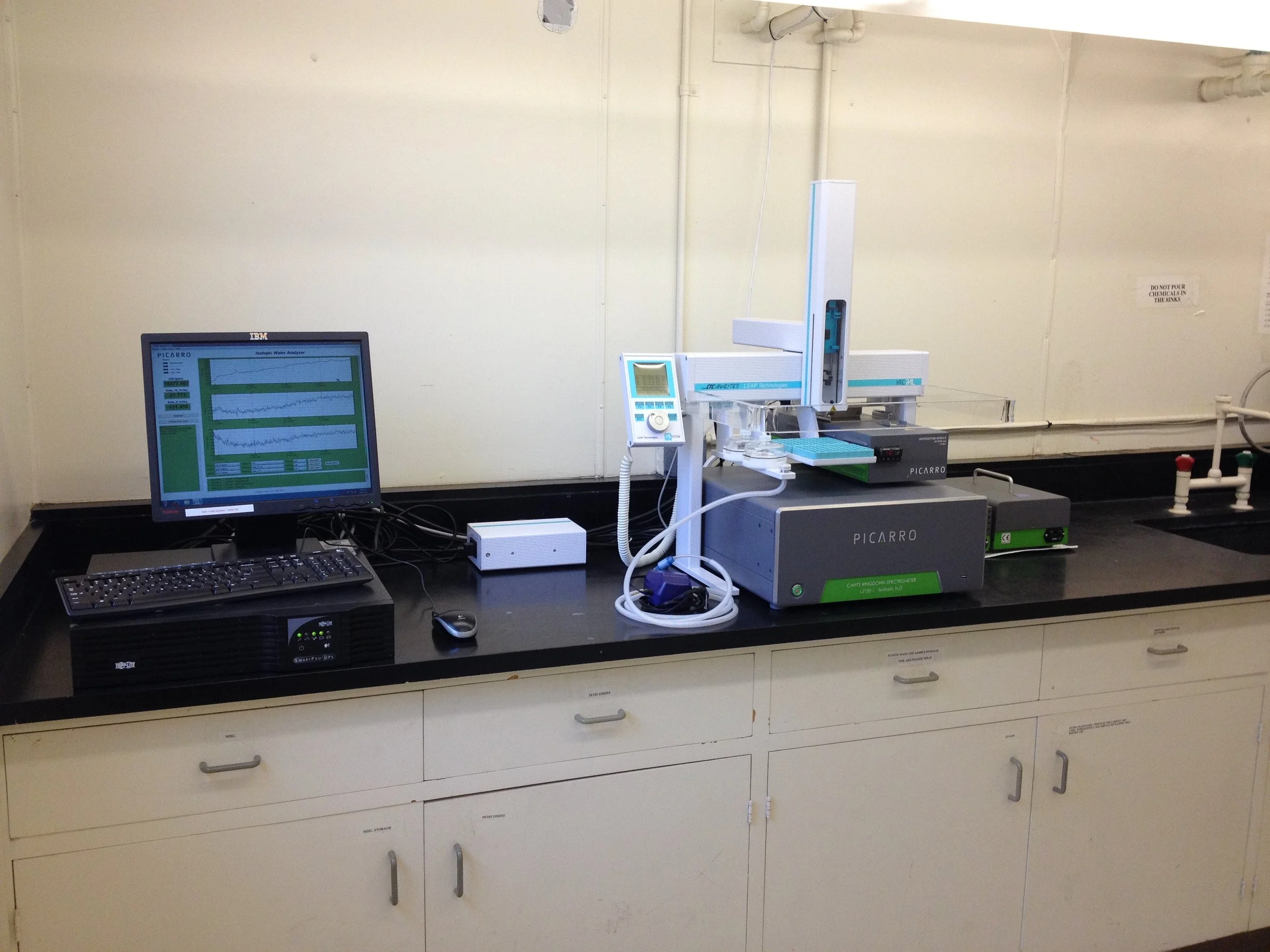Neighbor effects
Motivation: Another one of the key challenges in applying laser absorption spectrometers for physiological, ecological, and related types of research is making accurate trace gas concentration and isotope ratio measurements under conditions where neighboring absorption features directly interfere with analysis of the target features.
Background: Neighboring absorption features can impact target features in different ways. Adjacent features with very broad peak geometry can perturb that baseline of a target feature, whereas adjacent features with very narrow peak geometry can distort the apparent symmetry of the target line profile around its central frequency.
Approach: I collaborated with Shirley Papuga and colleagues to develop methods to: (a) detect spectral artifacts, (b) correctly attribute the artifacts to the underlying mechanism(s), and (c) then correct the distortions. We again focused on the spectroscopy of the water molecule, and here used both L2120-i and L2130-i analyzers. Our study is outlined in the slides below.
The full story, and its significance
Full story: The details of our study can be found in this reference:
Reference: Johnson, J. E., L. Hamann†, D. L. Dettman, D. Kim-Hak, S. W. Leavitt, R. K. Monson, and S. A. Papuga. 2017. Performance of induction module-cavity ring-down spectroscopy (IM-CRDS) for measuring δ18O and δ2H values of soil, stem, and leaf waters. Rapid Communications in Mass Spectrometry 31(6): 547-560.
Article DOI: 10.1002/rcm.7813
Other links: summary in Picarro library
Significance: This study has primarily been used by researchers in ecohydrology who are seeking methods for analysis of plant and soil water samples that contain complex mixtures of organic contaminants. Prior to our work, researchers in this area were interested in high-throughput methods for online extraction, combustion, and analysis, but skeptical of the performance of the existing technologies (i.e., micro-combustion module and induction module). Our study diagnosed the strengths and weaknesses of these approaches, and provided clear guidance about the conditions under which they can provide precise and accurate results.








